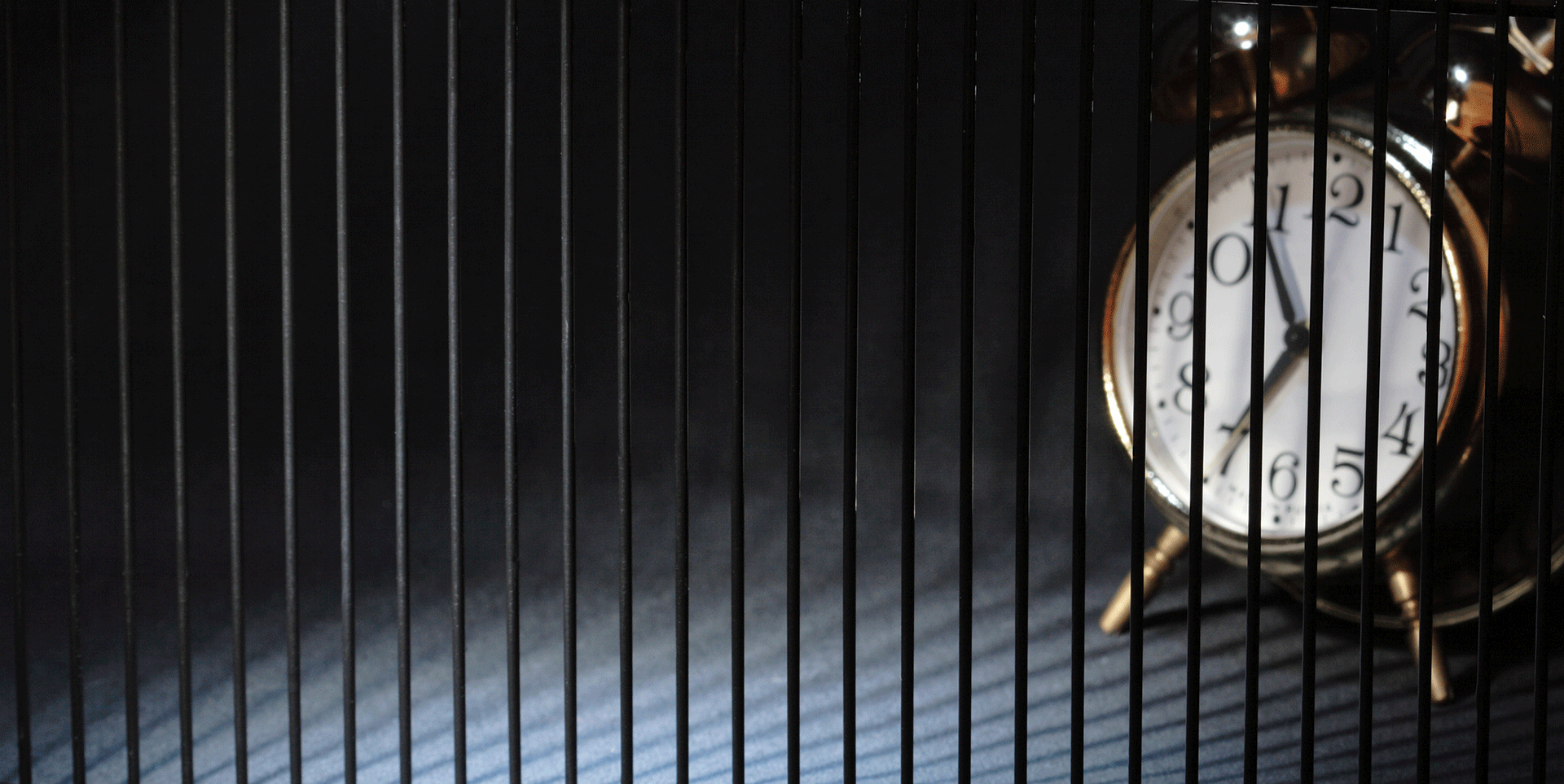Since Hans Selye introduced the concept of stress into the language of science almost seven decades ago, it has now become firmly rooted in our vocabulary and permeates all levels of everyday life. One common cause of stress, though unevenly distributed among us mortals, weaves enough threads into its intricate fabric that it cannot be entirely avoided: the relationship with time.
If a person from history could leap into our present and breathe the change-filled air of the 21st century, they would surely be stunned to find that it is the same planet, even if they no longer recognise much of it. The individual would surely have real difficulties in adapting to a life that is moving along a path vaguely similar to that of other centuries, but at breakneck speed. Whether they would feel comfortable in the century of speed, and whether they would consider the price paid for their place in a computerised and technologised society to be fair, we cannot know.
The century that made a truce with time
In her essay In the Intimacy of the 19th Century, Ioana Pârvulescu takes us in the opposite direction, inviting us to cross the boundaries of time in order to reach a temporal space devoid of most of today’s inventions, but full of an unmistakable joie de vivre: Romania in the second half of the 19th century.
From the documents of the period, the author extracts fascinating pieces of history and reconstructs an old but lively world in which she, the traveller—who symbolically discards all the familiar objects incompatible with the era in which she lands (from the cinema and the computer to detergents and antibiotics)—ends up feeling at home. A superficial inventory of this old-fashioned world is unlikely to seduce the exacting twenty-first-century reader, who may find the rules of conversation boring, the clothes difficult to put on without the skilful help of servants, the pace of horse-drawn carriages leisurely, the speed of steam locomotives slow, the letters book-length, and the alleyways that greet the unwary traveller who has left the centre of “little Paris” to be muddy. On second glance, however, one might admit that he has no reason to feel superior, simply because he carries on his shoulders the burden of an extra century and a half, with all its wealth as well as its misery.
The author sees her new contemporaries wrapped in a serenity that is untroubled by the thought of the future—a future in which they have an unshakeable and heart-warming faith, a future that seems as clear and bright as a child’s laughter, and for which they are prepared to make sacrifices with an enthusiasm that their descendants will find hard to match. And the reasons for their happiness, even if they don’t know it, are well-founded: “They hadn’t seen the great war at the beginning of another century, they didn’t know that the atomic mushroom existed, that the ozone layer was thinning, that the ice at the pole was melting, that the water was being poisoned, that the oil reserves were running out.”
Certainly they had other fears, too—including helplessness in the face of the many diseases of the day, of which tuberculosis, with its romantic aura, stood out. Yet their relationship with time was certainly a privileged one.
Great people in the context of a small story
The personalities of the time, those whose names would come to be inscribed in the ink of textbooks or the bronze of statues, found time for quiet evenings by the fire or, when the situation demanded it, to play the role of nanny or midwife. It is the century of people who did it all, like Alecsandri, who wrote poems, novels, sketches, comedies, dramas, obituaries, articles and hundreds of letters, all between the responsibilities of theatre director, magazine director, and diplomat. It is the age in which men seemed to have more arms and even more lives, living in a historical time marked by change, but which did not disturb their pace: they observed the protocol of social conventions, paid visits, went to the theatre and to street flower fights, wrote long letters, and engaged in small and private domestic tasks.
Noting that “life in uniform, tuxedo or waistcoat has a meaning, a theme, and an ideal,” Pârvulescu concludes: “My feeling was that they really lived, they were fully alive, while we are only half alive.” It is a conclusion that we may or may not accept at the end of a book that manages to touch us with a sense of nostalgia, if only because of the naturalness with which the characters, who are fascinating because of the greatness of their public achievements, devote themselves to their small piece of history—family life and friends, savouring the small moments of sweetness in life whenever the times offer them the opportunity for a break.
The contrast with the inhabitants of the 21st century is obvious: they seem younger, eternal teenagers, exalted by the idea that everything has to be built, yet in tune with a time that allows them to enjoy the exquisite moments of everyday life; we, on the other hand, are tired and bored “even before we do anything,” engaged in a war with time, not knowing when and if we will win it.
In search of lost (free) time
There are, of course, major differences between the challenges faced by people in the 19th century (or even our grandparents or parents) and those faced by our generation. If time had no patience back then, today it seems perpetually annoyed by the slowness with which we keep up with it. This is the experience of journalist Brigid Schulte, who has written her thoughts, experiences, and conclusions in the book Overwhelmed: Work, Love, and Play When No One Has the Time. Schulte writes about how her life, split between her job at the Washington Post and her responsibilities as a parent, has become “scattered, fragmented, and exhausting.” When John Robinson, a sociologist at the University of Maryland, said that women have thirty leisure hours a week, the journalist was shocked. Time had always slipped through her fingers, leaving her always late, out of breath, spinning on the carousel of the “last to-do” on an inexhaustible to-do list. Resigned to seeing the mad scramble between commitments as normality itself, Schulte took up Robinson’s challenge to keep a time diary with a sense that the whole time crunch bore the mark of her own inability to balance family and career, as she confesses in an interview with The Atlantic.
John Robinson’s theory is based on the premise that people don’t have so much of a problem with time as with the perception of how they spend it. “It’s very popular, the feeling that there are too many things going on, that people can’t get in control of their lives,” he says, adding that carefully kept diaries show a lack of evidence to support this view. In fact, they may even indicate the disguised existence of thirty to forty hours of free time per week, after all household, childcare, and work-related activities have been excluded from the time reports.
However, Schulte disagrees that the hours that Robinson describes as free time really belong in this category: for example, the two hours spent in the car waiting for a tow truck, or talking on the phone with a friend while picking up the child’s bike from the repair shop. Instead, she shares the conclusion of Rachel Connelly, an economist at Bowdoin College, that working mothers get almost no time off.
Time off is not something to say out loud
Realising that not only mothers, but also fathers and even single people can experience this feeling of being overwhelmed by daily tasks, Schulte set out to explore the reasons for this worrying reality—a life we miss while supposedly living it. This is how her book came to be, in which she attempts to unravel both the causes and the solutions to overload, taking into account the three dimensions of life, present in the very title of the book: work, relationships, and leisure.
It’s not just tax policy and labour law, Schulte argues, although they play an important role in an equation in which some variables, such as family and work structures, have changed significantly. She points out that there are countries where legislation supports workers and helps them better manage the conflict between work and other areas of their lives. For example, Denmark’s parental leave policy or Germany’s limits on working hours not only prevent occupational burnout but also limit unemployment.
At the same time, the feeling of being overworked can result from trying to conform to the model of the “ideal employee” who is willing to work overtime and travel for work without taking time off to deal with personal problems such as caring for a child or a sick parent.
Placing all the blame on the employer would be to look at the problem from only one angle. Because of the pressure to succeed created by the culture we belong to, we see being busy as an indicator of succeeding. We want to project the image of a busy person who is able to excel both at home and at work, and we act accordingly. We are even afraid of appearing to have a lot of time on our hands, lest we be judged by others. A busy schedule becomes the perfect alibi if you are suspected of inefficiency.

In another interview with LearnVest, Schulte admits that on several occasions she has been reluctant to talk about the subject of her book: free time. Given the myth that we should define ourselves by our productivity, she found it embarrassing to reveal her preoccupation with a subject that has an almost stigmatic connotation. In researching for her book, she found that the ambivalence of society’s attitude to the work-life balance was well illustrated by author Katrina Alcorn in her book Maxed Out: American Moms on the Brink: society expects its members to work as if they don’t have families, and to care for families as if they don’t work.
Schulte argues that the value of leisure time tends to be undervalued these days. This is wrong, because when we free ourselves from the routine of survival, we find resources to create, to discover new things and to find new solutions to old problems. Her solution, which will help us to free ourselves from the tyranny of the to-do list, is not to put off recreation until the (always elusive) moment when everything is ticked off, but rather to prioritise joy, play, and quiet moments, and to put them on the schedule until they become routine. If necessary, finding a group of people who share the same values will reconcile the need for social conformity with the need to free ourselves from the pressures of living by the clock.
Celebrating the wonders of life
Ben Hunnicutt, a leisure researcher at the University of Iowa, said in one of the interviews included in Overwhelmed: Work, Love, and Play When No One Has the Time that leisure is not necessarily measured in terms of activities, but by being open to “the wonder and marvel of the present.”
That’s what writer Sue Bender experienced when she learned to reevaluate her attitude to time in an Amish community. The world from which she came had ingrained in her a habit of hurry, overwork, and fierce and constant competition for a higher place on the merit list. When she announced to a friend that her first book, Plain and Simple, had made the New York Times bestseller list, she was interested to know where the book ranked on the list—an illustration of modern man’s deep-seated belief that the marathon of achievement need never end. Without converting to the Amish religion, Bender took from them the idea that the moments of a day can be savoured and the temptation to squeeze more and more out of them can be resisted. In her book Everyday Sacred: A Woman’s Journey Home, she writes that members of this community have a unique recipe for not missing their encounter with time: “Their lives are a celebration of the ordinary.”
New experiences make time elastic
The Amish community’s tendency to celebrate life’s moments, to examine its events and surprises through a different lens than modern people, brings them closer to people of other centuries and their more peaceful, steady relationship with time. It also reflects the attitude of children, who value their experiences differently from adults.
Studies show that there are differences in the perception of time according to age. While in childhood and adolescence time seems to move at a snail’s pace, in old age it feels like it is running. We can speak of the elasticity of time, says neuroscientist David Eagleman, who argues that time expands when the brain’s resources are stretched by new experiences, and compresses when this stretching is not done because of a lack of new experiences. Eagleman’s proposed solution to “slowing down” the passage of time is to get out of the rut by paying attention to details, having new experiences, doing ordinary things in new ways that demand our attention. The idea is to borrow from the exploratory attitude of childhood, since adulthood, and especially old age, runs the risk of avoiding new experiences and becoming accustomed to what surrounds us. Taking a different route home from work may seem like a small thing, but David Eagleman reassures us that it’s just one of the simple strategies that keeps the brain working by exposing it to new experiences, as long as we live those experiences consciously, not by putting them on autopilot.
Too busy for stars, rainbows, and relationships
In his book The Ragamuffin Gospel, author Brennan Manning evokes the crippling loss suffered by modern, secularised human beings—the loss of wonder. Maturity, Manning argues, has robbed us of the fascination of the world we live in, giving us instead boredom and immunity to what he calls the glory of creation. Convenience and our choice of a practical life have led us to change our perspective: we see ourselves as ever larger in an ever smaller world.
“We barely notice the cloud passing over the moon or the dewdrops clinging to the rose leaves. The ice on the pond comes and goes. The wild blackberries ripen and wither…. We avoid the cold and the heat…. We rake up every leaf as fast as it falls…. We miss the experience of awe, reverence, and wonder.”
It is not difficult to see that when we reach the point where we lose the joy of play (which Schulte considered essential to quality of life) and the joy of the simple things in life, we also distance ourselves from those close to us, under the ticking of the clock that demands efficiency, productivity and punctuality. So we miss out on the fulfilment that comes from the “little” things in life, without wondering if we have lost our direction, or if the diminution of joy and wonder means that we have stopped investing in the side of life that can offer real gain.
Bronnie Ware, a nurse who spent several years caring for the terminally ill, found that one of their five common regrets was not investing more time in important relationships. The impact of these confessions from people who had become aware that they hadn’t spent their time in a way that they could be at peace with now, at the finish line, was enough to prompt Bronnie to write a book, Five Regrets of the Dying.
By giving, you gain
While it may seem to defy mathematics, sharing time with someone in need offers several benefits to the giver, one of which is exactly what Eagleman was talking about—slowing down time. Psychologist Kelly McGonigal, in her book The Upside of Stress: Why Stress Is Good For You, and How to Get Good at It, tells of an experiment by researchers at Wharton College, University of Pennsylvania, in which participants were unexpectedly given time off work, some of which they were allowed to use as they pleased, while others were instructed to help someone.
At the end of the study, the participants rated the amount of free time they had, but also how little time they had in general. The result was surprising: people who had given their time to others perceived that they had more free time than people who had spent their time in their own way—as if the former had acquired the ability to cope better with time pressure. The conclusion drawn by the Wharton researchers could be used as a prescription for those who feel they can’t cope with the time crunch: “When individuals feel time constrained, they should become more generous with their time—despite their inclination to be less so.”
In the tension between supply and demand, modern people are challenged to divide their time wisely between work, relationships, and play, aware that life’s big goals sometimes hide within their outer shell a discouraging smallness, and that in the small things there can nestle vibrant meaning and purpose, just waiting to be discovered. In If I Had My Life to Live Over, written after being diagnosed with an untreatable genetic disease, the journalist and writer Erma Bombeck lists all the changes she’d like to make to a life that’s about to end. The common denominator of the list is the simple activities that are so easy to squeeze out of a busy day—more dinners with friends, more play with children, more frequent declarations of love. And the essence of this unattainable turnaround in time would be the value placed on moments: “I would seize every minute…look at it and really see it… live it… and never give it back.”
Her regrets, which are by no means unique, but are only more eloquent in a world too busy to take them into account, are full of meaning for anyone who knows that beyond the whirl of ephemeral activities lies a time in which it is getting late for us. And we should live it not by forgetting that there is a marathon finish line, but by having built up things that can no longer be taken away from us. Otherwise we will only be able to say, like Firs, the old servant forgotten in the locked mansion, who cannot bear the loss of the cherry orchard: “Life has gone by as if I never lived.”
Carmen Lăiu is an editor at Signs of the Times Romania and ST Network.



















